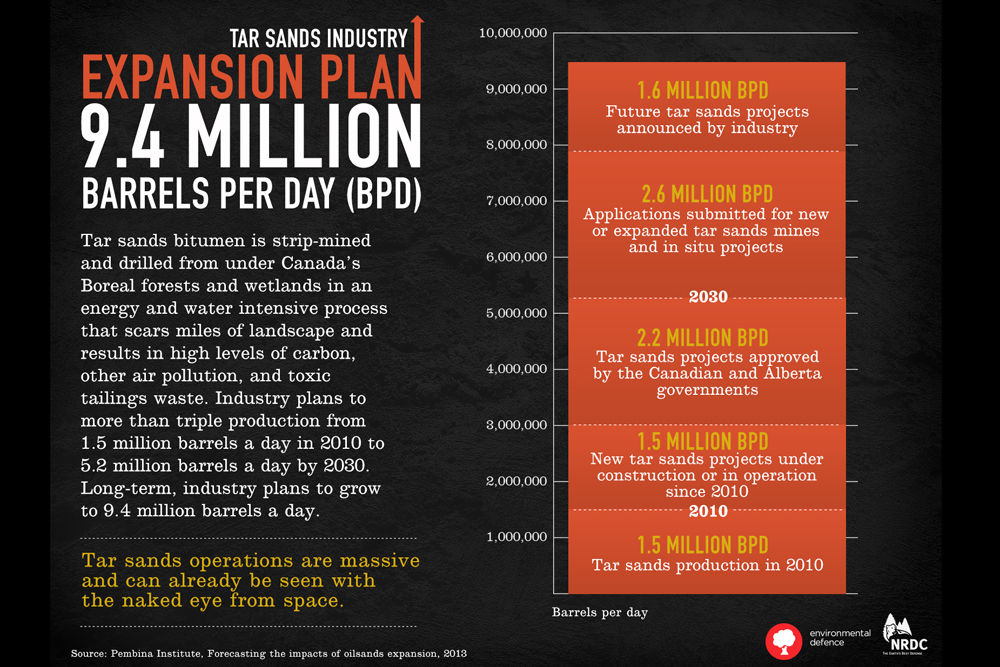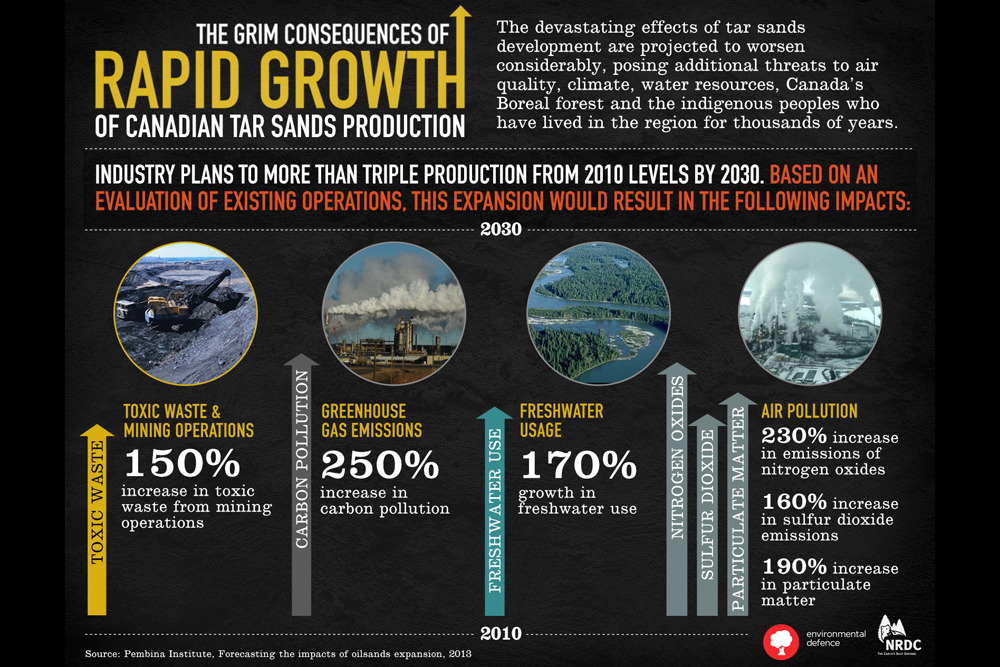
Keystone XL Pipeline Will Cause Damage Beyond Spills (Op-Ed)

Danielle Droitsch is director of the Canada Project at the Natural Resources Defense Council (NRDC). She contributed this article to LiveScience's Expert Voices: Op-Ed & Insights.
Back in 2007, while I was working and living in Alberta and focused on the protection of watersheds, I organized a canoe expedition down the Athabasca River. The river is part of a lush watershed that flows through the heart of tar-sands mining and drilling operations in Canada's pristine boreal forests.
My goal was to draw attention to the dual threats of global warming and tar-sands mining operations that are devastating the region. The river is declining as a result of receding glaciers and smaller snowpacks, both of which are consequences of a warming climate. But even worse, as the Athabasca flows downstream through the scarred industrial landscape, it is contaminated by toxic waste leaching from tar-sands mining operations that poison the waters, threatening wildlife and the communities that depend on their bounty.
It was distressing to see this level of devastation, but now I realize it was only the tip of the iceberg. Back then, the production of tar-sands oil had just reached a high point of 1.2 million barrels per day when I flew over the boreal forest in a small, four-seat airplane and watched colossal tree-cutting operations clearing thousands of acres of trees, flying over miles of virgin forests that had already been leased for new mines.
But soon, there would be millions more acres of clear-cut trees, and millions more gallons of toxic waste that would leach into the rivers from tailings ponds. Since 2007, tar-sands production has grown by 50 percent. [A Clear Signal Against the Use of Tar Sands (Op-Ed)]

This year, the Canadian tar-sands industry announced new plans to triple production by 2030. A new analysis by the Pembina Institute, "Forecasting the impacts of oilsands expansion," reveals that this rapid expansion of Alberta's tar-sands operations will raise overall carbon pollution by 250 percent due to the intensive greenhouse-gas emissions associated with tar-sands operations.
The Keystone XL pipeline is widely regarded as essential to enabling the tar-sands industry to achieve that dramatic level of growthand, therefore, become a major driver of global greenhouse-gas emissions. For example, Goldman Sachs recently acknowledged that without Keystone XL, lower prices for tar sands and higher transport costs will result in the cancelation or deferment of tar-sands expansion projects. Arguments that tar-sands expansion will occur with or without Keystone XL are simply unfounded.
We already know that the prospect of a Keystone XL spill could have massive impacts on water resources, affecting people across America's heartland. Moreover, the benefits of Keystone XL are vastly overstated. Keystone XL is an export pipeline that will not benefit the United States' energy security, and will create far fewer jobs than claimed by the oil industry.

Keystone XL will directly lead to a significant increase in greenhouse-gas emissions, and under President Barack Obama's climate test, the pipeline should be rejected.
Six years ago, I was lucky to get a mention of our canoe expedition through the tar-sands region in the local Canadian papers. I couldn't have imagined that six years later, the U.S. president would set a high-profile marker to review the proposed Keystone XL tar-sands pipeline based on its climate impacts.
This is the kind of bold leadership we need on this issue — leadership that will force us to acknowledge the true damages taking place from industrial tar-sands operations in Canadian boreal forests. We cannot allow the Keystone XL pipeline to facilitate the expansion of this highly destructive, dirty oil operation.
Since I paddled down the Athabasca River, the environmental devastation of the region has only worsened — and so has our climate.
The views expressed are those of the author and do not necessarily reflect the views of the publisher.
Sign up for the Live Science daily newsletter now
Get the world’s most fascinating discoveries delivered straight to your inbox.
World's largest solar telescope turns on powerful new camera, revealing breathtaking image of a continent-size sunspot
'Hell ant' with scythe-like jaws may be oldest ant fossil ever discovered
Ancient DNA and modern genomes can reveal stories of past peoples, from the Iron Age to Chernobyl, geneticist says










